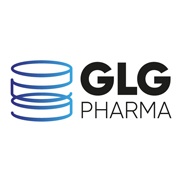Degrading STAT3 Protein
The STAT3 Protein and Cancer
The best way to begin to understand STAT3 and its role in cancer is to answer some basic questions. Below are general questions that will help answer the question: Why we are focused on STAT3 protein degradation.
STAT3 Information:
- What kind of protein is STAT3?
- Signal transducer and activator of transcription 3 (STAT3) is a transcription factor that mediates cellular responses to a variety of cytokines and growth factors. STAT3 activation is mediated through phosphorylation and either homodimerization or heterodimerization with another member of the STAT family[1].
- What happens when STAT3 is activated?
- STAT3 activation leads to the activation of Treg and Th17 cells (immune cells that must be in balance with one another), the differentiation of M2 macrophages, the accumulation of MDSCs (Myeloid Derived Suppressor Cells) and the absence of functional DCs (Dendric Cells)[2].
- What is STAT1 and STAT3?
- While STAT3 promotes cell survival/proliferation, motility and immune tolerance and is considered as an oncogene, STAT1 enhances inflammation and innate adaptive immunity, triggering in most instances anti-proliferative and pro-apoptotic responses in tumor cells[3].
- Is STAT3 anti-inflammatory?
- Only in this context, STAT3 has an anti-inflammatory role by maintaining the ability of Foxp3+ Tregs to inhibit inflammatory Th17 cells. Th17 cells are implicated in Graft vs Host Disease, organ transplant rejection and tumor metastasis by enabling tumor migration and host new organ penetration and proliferation.
- What activates STAT3?
- STAT3 protein is activated by several pro-inflammatory cytokines, including interleukin-6 (IL-6), which is a prime target for therapeutic intervention in several inflammatory diseases including rheumatoid arthritis, cancer, Still’s disease, and giant cell arthritis, as well as many other proliferative diseases[4].
- What does STAT3 protein do?
- Through its regulation of gene activity, the STAT3 protein is involved in many cellular functions. It helps control cell growth and division (proliferation), cell movement (migration), and self-destruction (apoptosis)[5].
- What is the STAT3 pathway?
- STAT3 modulates the transcription of a variety of genes involved in the regulation of critical functions, including cell differentiation, proliferation, apoptosis, angiogenesis, metastasis, and immune responses. For many cancers, elevated levels of activated STAT3 have been associated with poor patient prognosis and rapid cancer progression[6].
Abbreviations:
- APC, antigen presenting cell,
- C/EBP, CCAAT-enhancer-binding protein,
- CD, cluster differentiation,
- CDK, cyclin dependent kinase,
- CSF-1, colony stimulating factor-1,
- CTL, cytotoxic T lymphocyte,
- DC, dendritic cell,
- DC-SIGN, dendritic cell-specific ICAM-3 grabbing nonintegrin,
- DNA, deoxyribonucleic acid,
- EGF, epidermal growth factor,
- ERK, extracellular signaling regulated kinase,
- FGF, fibroblast growth factor,
- FOXP3, forkhead box P3,
- G-CSF, granulocyte colony stimulating factor,
- GFI-1, growth factor independent-1,
- GM-CSF, granulocyte macrophage colony stimulating factor,
- HSP, heat shock protein,
- ICAM, intracellular adhesion molecule,
- IFN, interferon,
- IL, interleukin,
- JAK, Janus activated kinase,
- LPS, lipopolysaccharide,
- MCP-1, monocyte chemoattractant protein-1,
- MDSC, myeloid derived suppressor cell,
- MHC, major histocompatibility complex,
- NADPH, nicotinamide adenine dinucleotide phosphate hydrogen,
- NFκB, nuclear factor-κB,
- NK, natural killer,
- NO, nitric oxide,
- PDGF, platelet-derived growth factor,
- PI3K, phosphatidylinositol 3-kinase,
- PIAS, protein inhibitor of activated STAT,
- RANTES, regulated on activation normal T cell expressed and secreted,
- RAR, retinoic acid receptor,
- RNA, ribonucleic acid,
- ROR, RAR related orphan receptor,
- ROS, radical oxygen species,
- shRNA, short hairpin RNA,
- siRNA, small interfering RNA,
- SOCS, suppressor of cytokine signaling,
- STAT, signal transducer and activator of transcription,
- TAM, tumor associated macrophages,
- TCR, T cell receptor,
- TDE, tumor-derived exosome,
- TGF, transforming growth factor,
- Th, T helper cell,
- TLR, Toll-like receptor,
- TNF, tumor necrosis factor,
- Treg, regulatory T cell,
- VEGF, vascular endothelial growth factor
[1] 2015-Shalapour et al-Immunity and Inflammation the battle of good and evil. Shabnam Shalapour, Michael Karin. J Clin Invest. 2015;125(9):3347-3355. https://doi.org/10.1172/JCI80007.
[2] 2013-Rebe et al-STAT3 activation-A key factor in tumor immunity: Cédric Rébé, Frédérique Végran, Hélène Berger & François Ghiringhelli (2013) STAT3 activation, JAK-STAT, 2:1, e23010, DOI: 10.4161/jkst.23010, To link to this article: https://doi.org/10.4161/jkst.23010
[3] 2013- Pensa et al-STAT1 and STAT3 in Tumorigenesis_ Two Sides of the Same Coin. Madame Curie Bioscience Database [Internet]. Austin (TX): Landes Bioscience; 2000-2013.
[4] 2017-Chakraborty et al- Activation of STAT3 integrates common profibrotic pathways to promote tissue fibrosis. NATURE COMMUNICATIONS | DOI: 10.1038/s41467-017-01236-6
[5] 2021-Zhou et al-STAT3 an important role in DNA replication by turning on WDHD1. Zhou and Chen Cell Biosci (2021) 11:10. https://doi.org/10.1186/s13578-020-00524-x
[6] 2010-Johnston et al-STAT3 signalling- Anticancer strategies and challenges. Molecular Interventions. doi:10.1124/mi.11.1.4


